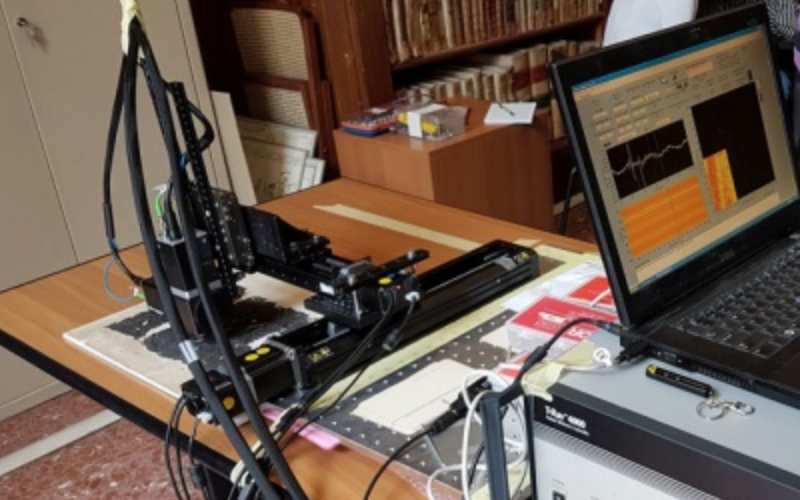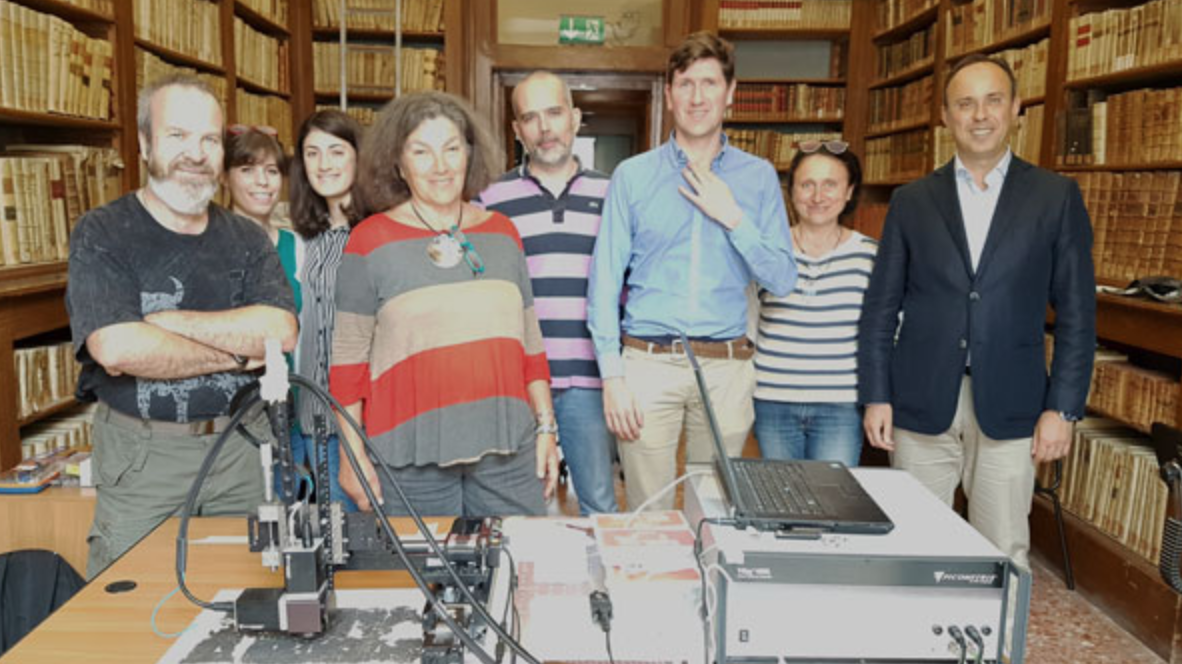

Innovative techniques applied to papyri from Hercolaneum
Two different experiments were conducted on opistographic papyri from Herculaneum at the local Officina dei Papiri Ercolanesi in February and May 2018 thanks to the joint initiative of the National Library “Vittorio Emanuele III” of Naples and the Italian CNR. The aim was to read the text in the verso of the papyri by using with innovative, non-invasive techniques. In the past the papyri have been unrolled, transcripted and glued on cardboard and this circumstance makes their physical removal from the support impossible. This is way researchers cannot verify presence and extension of a text on the verso even if historically attested.
The first experiment was conducted in February: an innovative technique, NIR Hyperspectral Imaging, was applied on some papyrus samples with significant results. During the second experiment, conducted in May, the TeraHertz imaging was applied on the same samples, the results are currently under evaluation. The Institute for the European Intellectual Lexicon and the Institute of Nanotechnology-CNR in collaboration with the University of Rome “La Sapienza”, Department of Physics, asked to have access to IPERION CH facilities. The IPERION CH French Mobile Laboratory has conducted both the experiments within the Operative Agreement CNR-BNN related to the application of cutting-edge chemical-physical techniques and non invasive analysis of manuscripts and papyri. The experiments are also part of the REA Marie Skłodowska-Curie Individual Fellowship 703798-AcadHist (EC, H2020, ‘People’) hosted by CNR-ILIESI.
